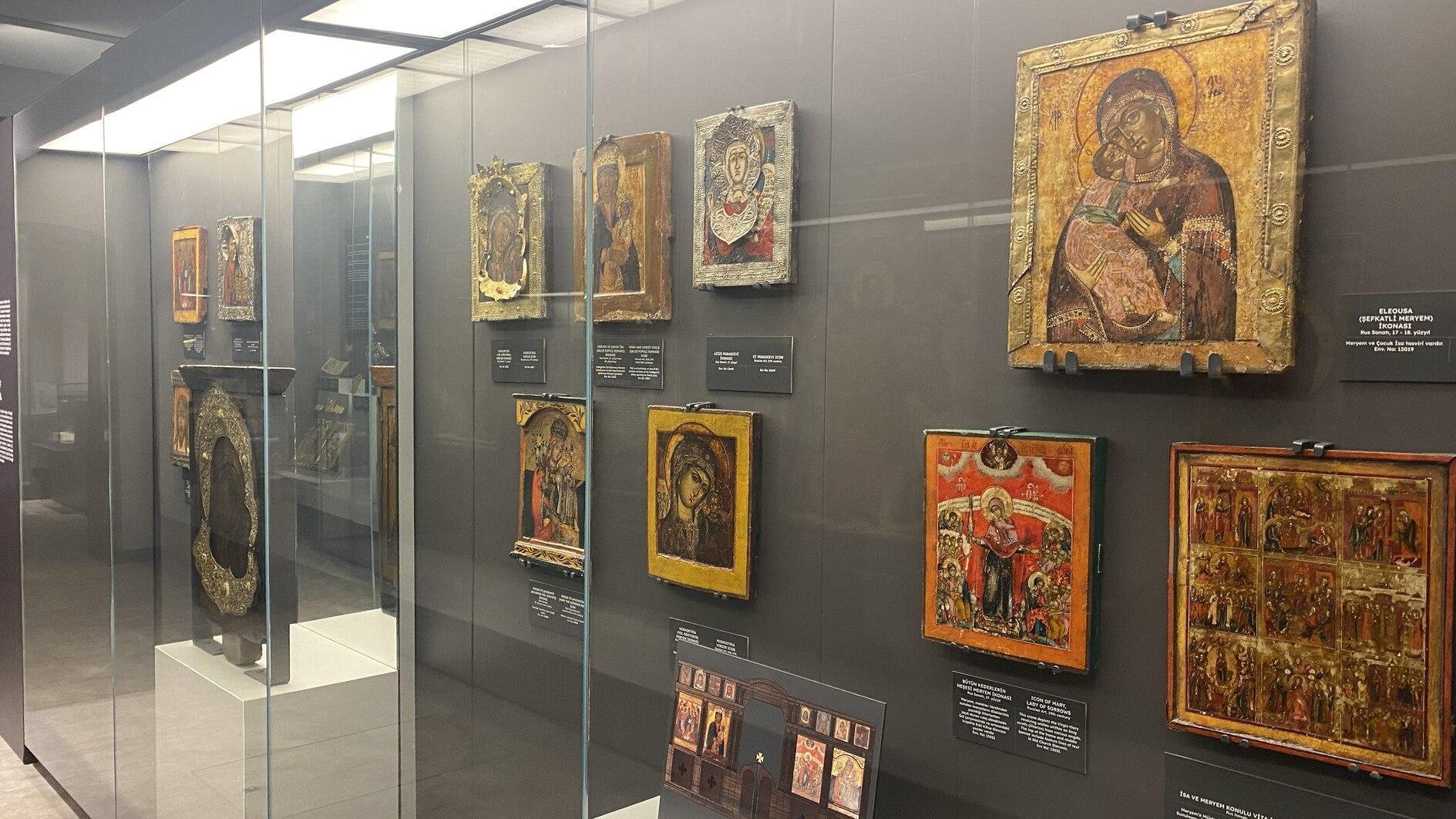
The Hagia Sophia History and Experience Museum, located in Istanbul’s Sultanahmet Square, opened its doors with new works, revealing the most special examples of historical and cultural heritage.
The old Defter-i Hakani Nezareti (Land Registry Directorate) building in the historic district was converted into a museum in 2023 by the Culture and Tourism Ministry, and the Hagia Sophia History and Experience Museum started to present the 1,700-year history of Hagia Sophia to visitors as a visual and auditory feast with the help of the latest technologies.
On May 22, the museum reopened its doors with a rich and diversified collection of new 30 works.
The updated “Museum Historical Artifacts Collection” includes the 15th-century Quran, Islam's holy book, rare candlesticks and liturgical materials belonging to the Christian religion, offering visitors the opportunity to travel through a wide range of history.
The historical brick used in the construction of Hagia Sophia and having ancient Greek inscriptions, as well as the bronze medallions made by the Fossatti Brothers and covering the faces of the four Seraphim Angels in the dome, are also exhibited in the museum.
The legacy of Sultan Mehmet the Conqueror
The museum also displays documents related to the Hagia Sophia Mosque Foundation, which was established by Sultan Mehmet the Conqueror (Fatih Sultan Mehmet) after the conquest of Istanbul. These documents provide detailed information about the administration of the foundation and the expenditures made. These historical documents of the foundation exhibited in the Fatih Sultan Mehmet section offer visitors the opportunity to go deeper into history, emphasizing the importance of preserving and understanding this unique heritage.
Speaking about the newly added artifacts in the collection, Hagia Sophia History and Experience Museum Director Murat Bozcu said that the museum was opened to visitors last year, but some changes during the recent weeks.
“This place was used as a building where land registry services were carried out during the Ottoman and Republican periods and it was converted into a museum in 2023 where the 1,700-year history of Hagia Sophia Mosque is shown. In the museum, we have a digital section on the first two floors, where the latest technological facilities and advanced visual and audio systems are used. Here, visitors see the Hagia Sophia during its construction and its conversion into a mosque after Fatih Sultan Mehmet's conquest of Istanbul," he said.
"The establishment of the Hagia Sophia Foundation, the reinforcements made by Architect Sinan to Hagia Sophia during the reign of Sultan Selim II, and the engineering marvel supports, are also told in the digital section. The 1,700-year history of Hagia Sophia is presented to our visitors as an enjoyable experience. On the museum floor, where historical artifacts are exhibited, visitors receive the academic information about what they see,” he added.
Stating that with the new ones, a total of 204 works are currently exhibited in the museum, Bozcu said, “Very rare artifacts such as the Holy Quran, Quran lecterns, prayer rugs, pulpits and candlesticks from the period when Hagia Sophia was used as a mosque after the conquest are exhibited in the museum. Another important group of artworks added to the exhibition is defined as liturgical materials found in churches in Anatolia and registered in the museum inventory."